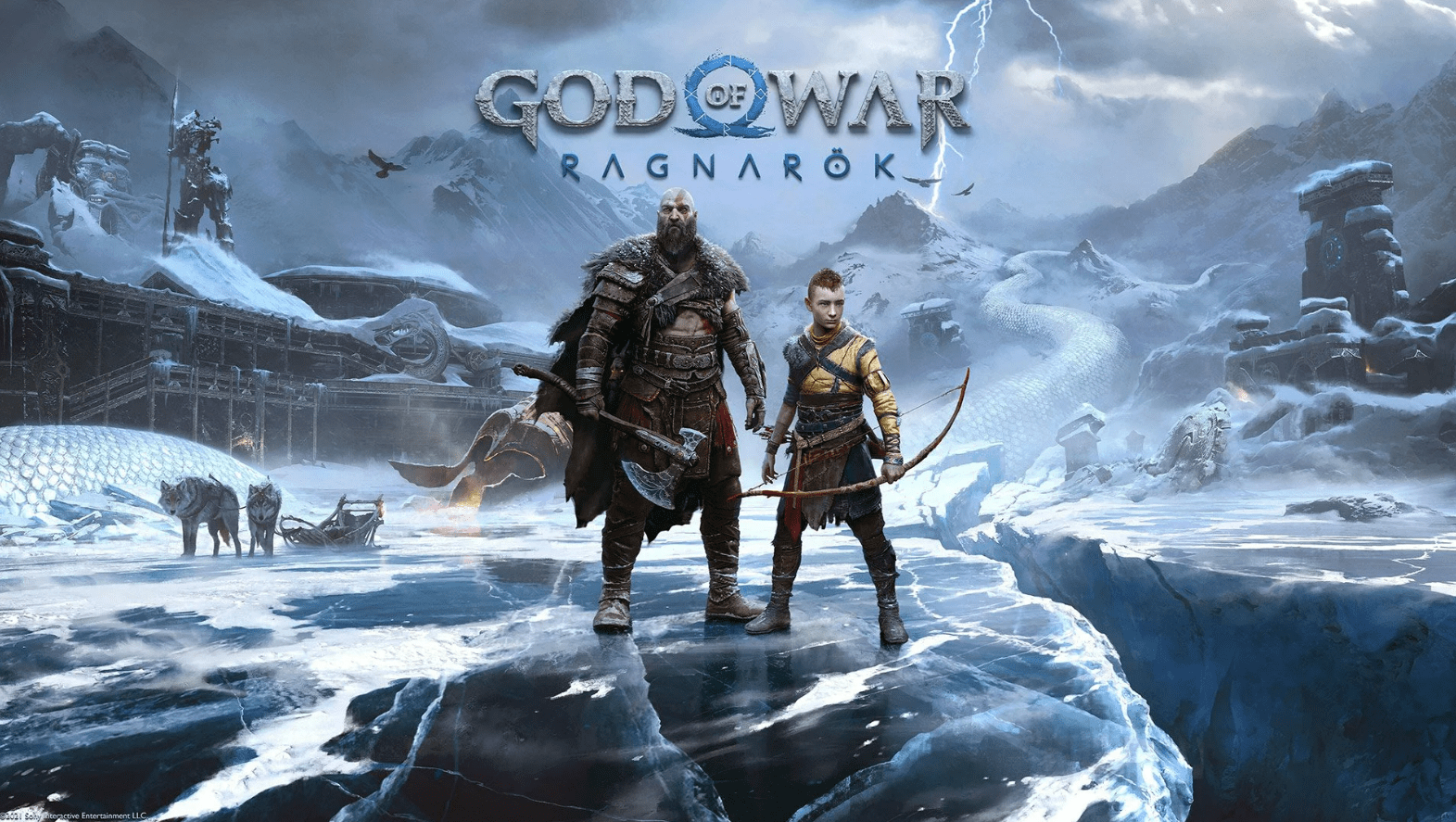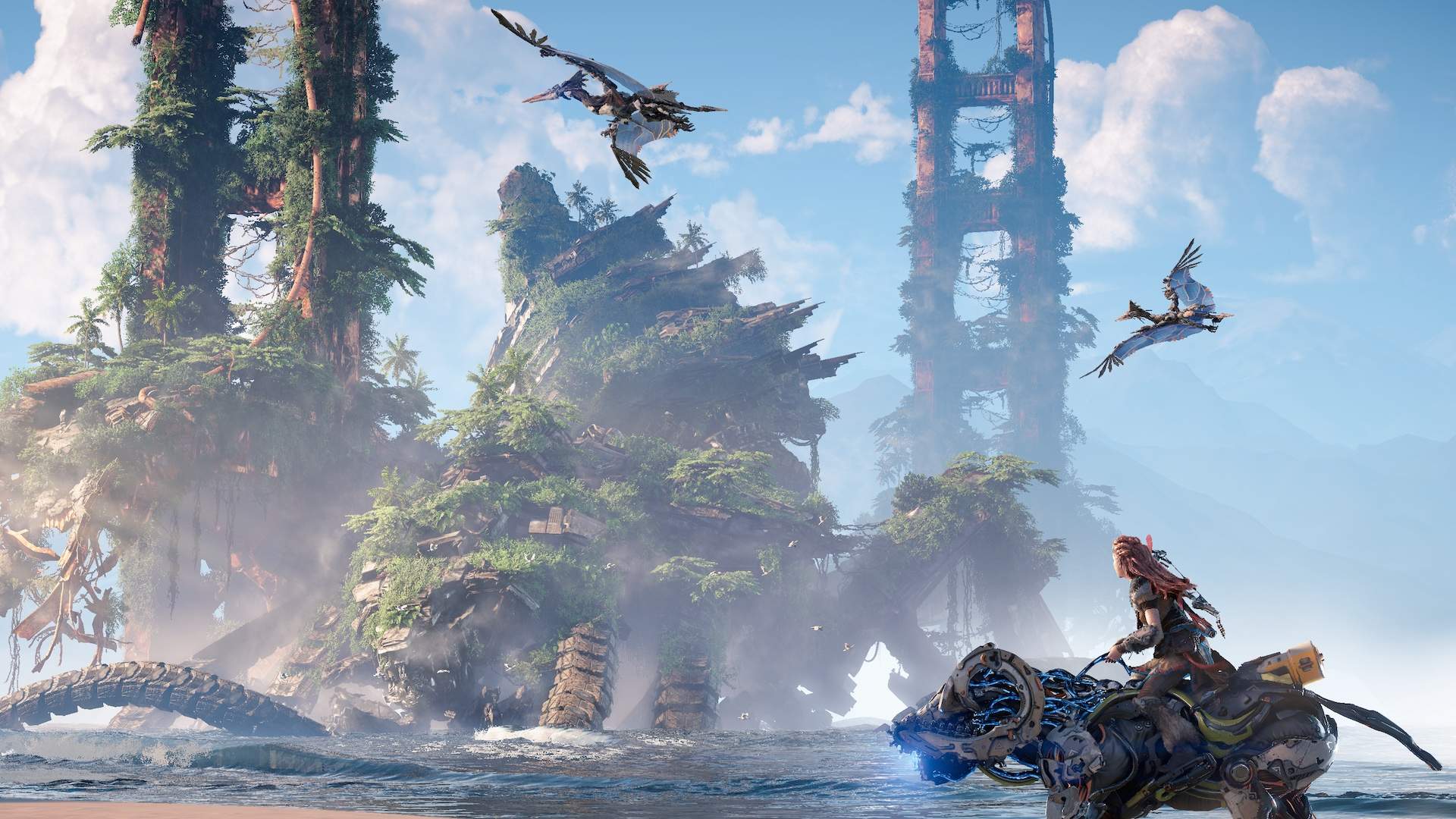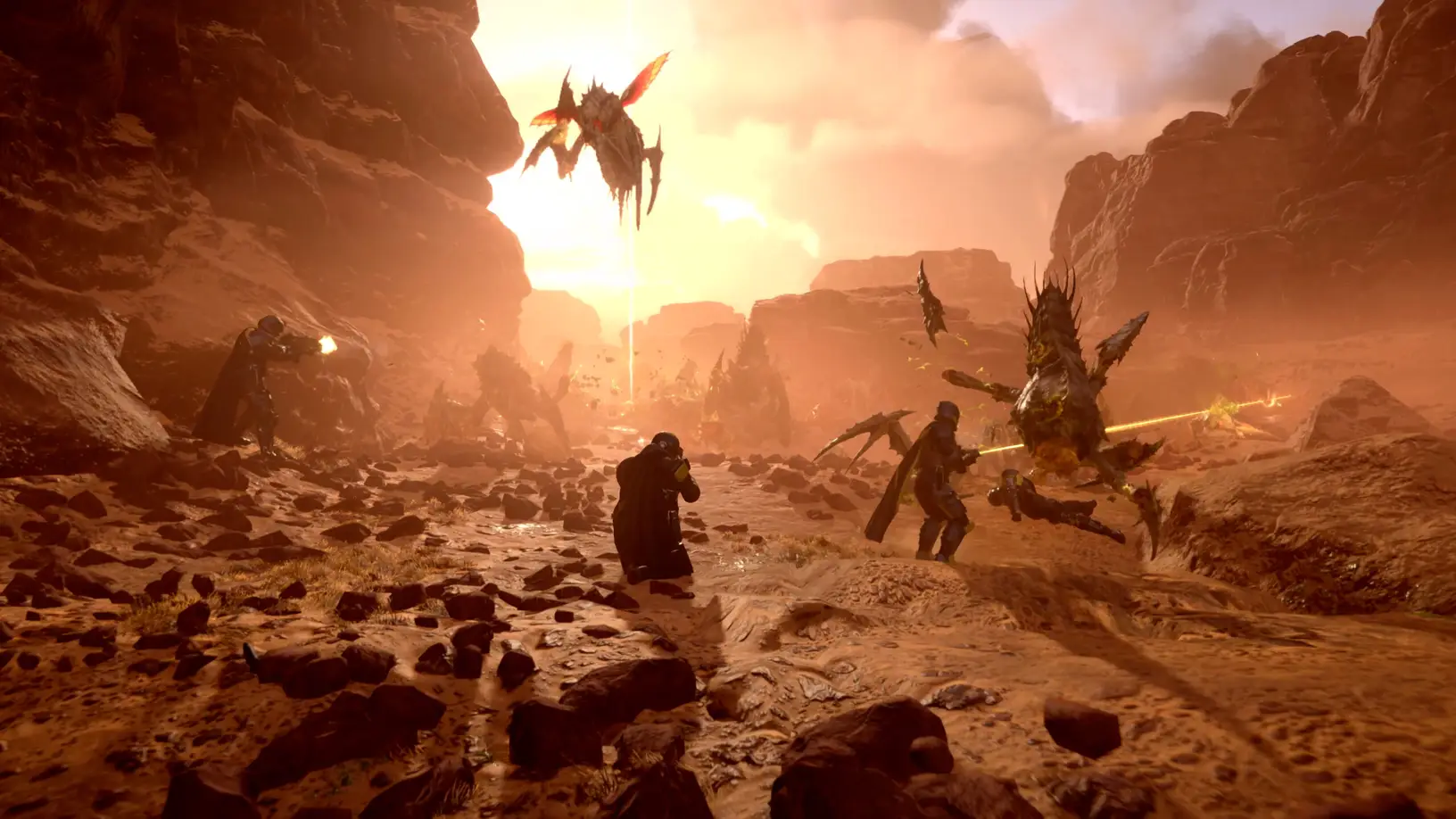God of War Ragnarök Review (PS5) – Monster Rescuer Rise
First things first – SPOILER ALERT for God of War 2018 – you’ve had four years to play that game, so if you haven’t yet, that’s on you for reading a review of God of War Ragnarök.
Kratos is back. The violent headstrong grunting God of War mascot of all things PlayStation for almost twenty years, is back. Following on from his 2018 outing, venturing into the Norse god pantheon and killing his way through it, God of War has become about more than hacking and slashing and murdering your way to the end credits. Kratos is older, wiser, more reflective, and would rather protect his son than rage in the way we remember him. It’s an incredibly successful reboot, tapping into gamers ten years on and their ongoing and changed lives.
Everything about God of War is epic in scale and spectacle and the norse duology is no different. Ragnarök manages somehow to beat its own personal best and set up more moments and more vistas than its predecessor. To add to this, Ragnarök is technically impressive, boasting incredible visuals and employing a seamless (bar a few flashes) single shot from beginning to end that would make Sam Mendes jealous (he made 1917 before you start googling).
It’s a narrative tour de force, climactically ending an epic story about prophecy, gods and the lengths a father will go to protect his son. There is a Helheim of a lot to unpack and talk about so let’s get to it.
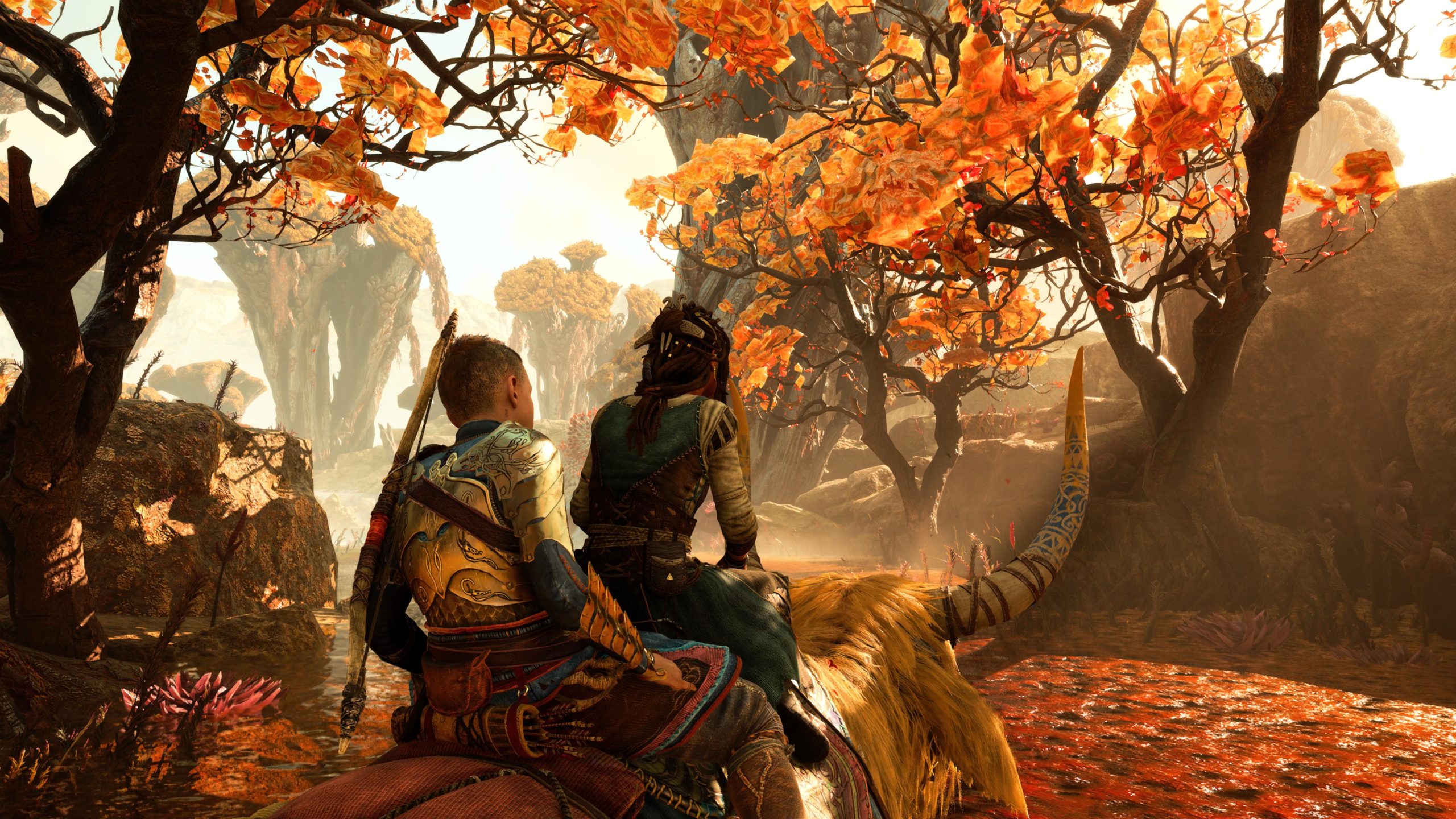
Three years have passed since God of War 2018. Kratos and Atreus hide out and train in the Stave, a magically-warded snow-blown area in the realm of Midgard. They hide from their enemies and the reckoning due from the first game. Kratos killed many of Odin’s kin, and Freya wants revenge for her son Baldur’s death. Atreus, now even more confused by his Loki heritage than before, must be trained, must be ready to face what Kratos knows will come. Winter is coming, sorry, Fimbulwinter is coming, and has taken hold of the land. It is said to be followed by Ragnarök, the end of days in Norse mythology.
But Atreus hasn’t been as content to stay put as his father. With Sindri the dwarf’s help, he’s revisited shrines, re-examined the prophecy, and is very aware that he, as Loki, is tightly wrapped up in events to bring about Ragnarök. There is a push and pull throughout the game of different readings of the prophecies, one version where Kratos dies in the final events of Ragnarök, another where he doesn’t if a champion fights and so on. When Atreus’ extracurricular activities come to light, Kratos is actually more understanding than you might expect, following on an excursion to find and free the Norse god of war Tyr and helping his son investigate the possibility to avoid Ragnarök.
The narrative from here is as epic and impressive as we’ve come to expect from God of War, and particularly this reboot, but it’s also messy and lacks explanation. For a game steeped in myths and stories from Mimir the talking head and others throughout, it struggles with exposition, or in really setting up much of a clear goal, at least for the first ten hours or so. Without a pretty detailed memory of the first game, it’s not clear what Ragnarök is or what it’ll cause, it’s not clear how much time has passed since the first game, and it struggles to clearly define why we go to each area beyond just characters deciding to do that thing next.
When you eventually get some answers, they are confused and lack direction. This is by design to some degree – Atreus and Kratos must learn the full extent of Ragnarök and Loki’s place in it – it is that mystery that drives much of the plot – how much of prophecy to believe and how much to make their own destiny. Can they fight Odin, when the long winter and the prophecy all seems to point to the end of the world?
Despite those wobbles in the first ten hours, Ragnarök gets into its stride, and begins to deliver something truly memorable. The narrative is rich and multi-layered, full of nuance one minute, and epic splendour the next. You’ll go from a heartfelt character beat one moment, Kratos showing pride in his son for instance, to an insane flying lurching chase, or nail-biting brutal fight scene. Then to a level where the sheer scale will make you gawp in wonder, and then straight to another so lush with invented flora and fauna you can feel the humidity.
Obviously beyond this point, I can’t go into much detail of the plot without major spoilers. I haven’t covered anything beyond the first five hours in detail, and I haven’t even alluded to much beyond about ten hours in. This is a thirty-hour game even if you barely ever stray from the main objectives, so there is a lot to see that reviews can only hint at. The story trailer we got before release really gives a flavour of the far-flung reaches the epic plot takes us.
Ragnarök’s major takeaway is prophecy and whether you believe it to the letter, or make your own destiny. Sometimes the two dovetail together, Atreus and Kratos fulfilling prophecy in interesting and unexpected ways, and sometimes they really don’t, throwing prophecy aside and going their own way.
Despite my early misgivings, the plot does redeem itself and then starts to ratchet up in intensity to the end. Level after level just heap spectacle after spectacle on you, each one somehow even more impressive than the last. Each time I would say to myself, I think that level finally earned the score, and then another even better level would appear. Ragnarök’s narrative maybe just bows under its own weight – it’s so chock full of dialogue and plot that it was kind of inevitable that parts would sag.

The world of Ragnarök is vast – those closed-off realms from the first game that you wished you could see, well now you can. Svartelheim is the first in question, the warm rocky, but also wetlands realm of the dwarves. Vanaheim and the perpetual elves war, the fiery volcanic realm of Muspelheim, Midgard (Earth), Jotunheim (giants), and all the rest of the nine. Another incredible standout is the Ironwood, a lush swamp/jungle full of colours where you’ll befriend dozens of animals.
Traversal is fantastic in Ragnarök. You can never get anywhere just on foot. You’ll have to use the boat from the first game, or ride on the back of a friendly bantha-like creature, or a horse made of kelp, or traverse the sands and snow from the back of a Gears 5-type sled pulled by wolves or their magical equivalents.
In between the fights and story there is a lot of standard third-person adventure fair; going off the beaten path for a spell to find treasure chest after treasure chest, spotting and hitting far-off green ravens with your axe, collecting loot and upgrade materials, solving puzzles generally just by exploring each area thoroughly until relatively simple solutions present themselves.
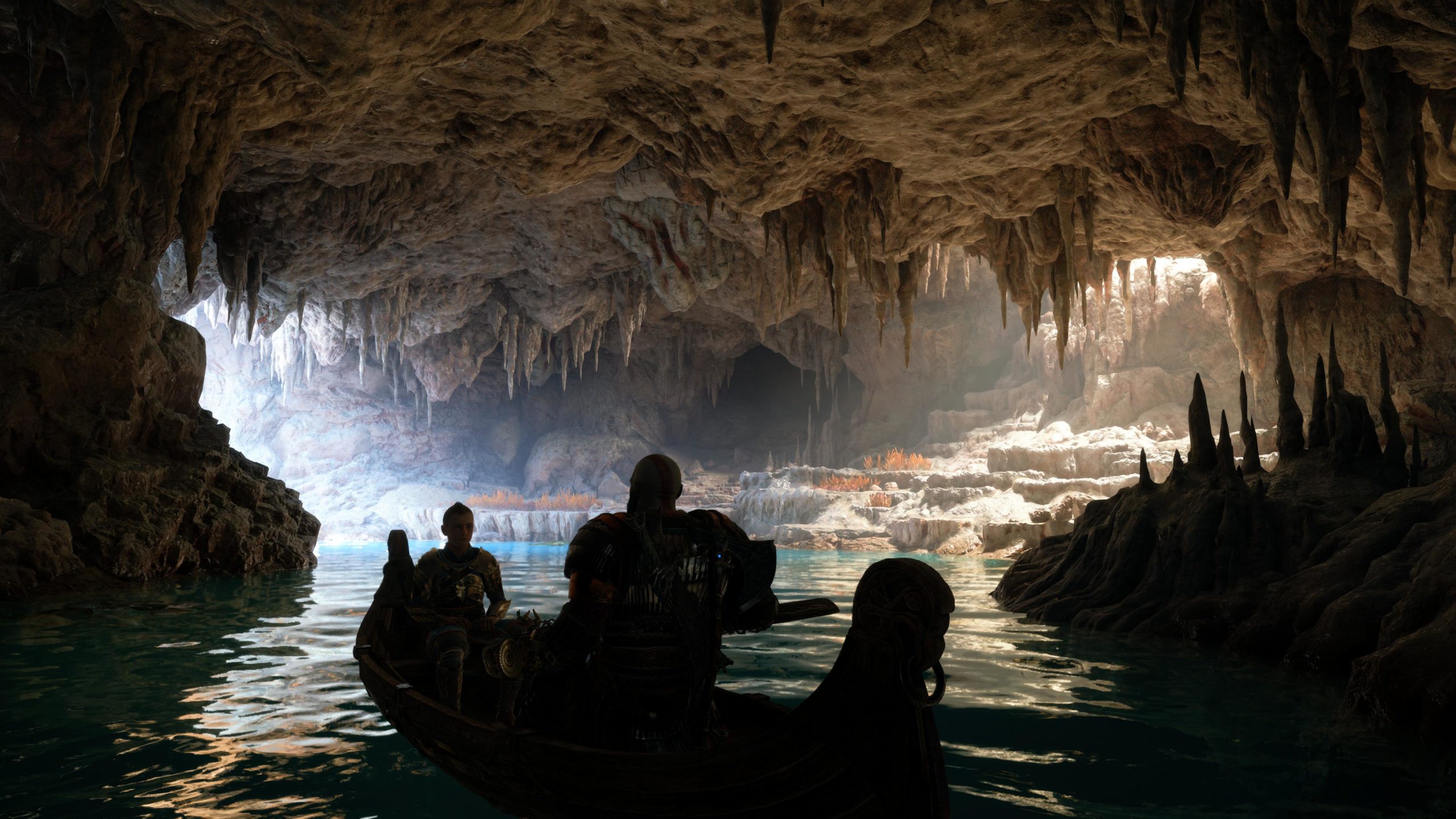
Ragnarök recreates 2018’s requirements and gameplay loop almost verbatim. You could say there’s not a lot of new here, the brutal God of War does spend an awful lot of his time picking up random junk. Or you could say it’s a perfect and constant dopamine loop of finding and achieving that keeps you playing and didn’t need changing just to add some originality to a sequel. This is more of what you liked, why change it?
Though the start may seem like a funnelled and linear path, the game opens up fast, allowing for travel to the other realms I mentioned and often open-ended optional areas like the wonderful lake from the first game. You decide where to visit and whether to bother with all the optional stuff, but you have the option between almost every story mission. The tracking mechanism for every chest, raven and collectible is second to none, exhaustive in its cataloging of everything you could ever wish to find in the game, and a boon for completionists and trophy hunters, and those of us, like me, who might want to clear things up later.
Optional areas and a number of the side quests are geared around finding and freeing great mythical creatures – I found this aspect of the game narratively somewhat wanting, but enjoyment-wise, my absolute favourite sections. I could happily play a whole game (of this quality of course) designed around saving large mythical creatures. The Jellyfish were fantastic and the large whale creature early on, each one adds to the richness of the world and in conjunction with the lush areas like the Stonewood, just makes Ragnarök sing with life.
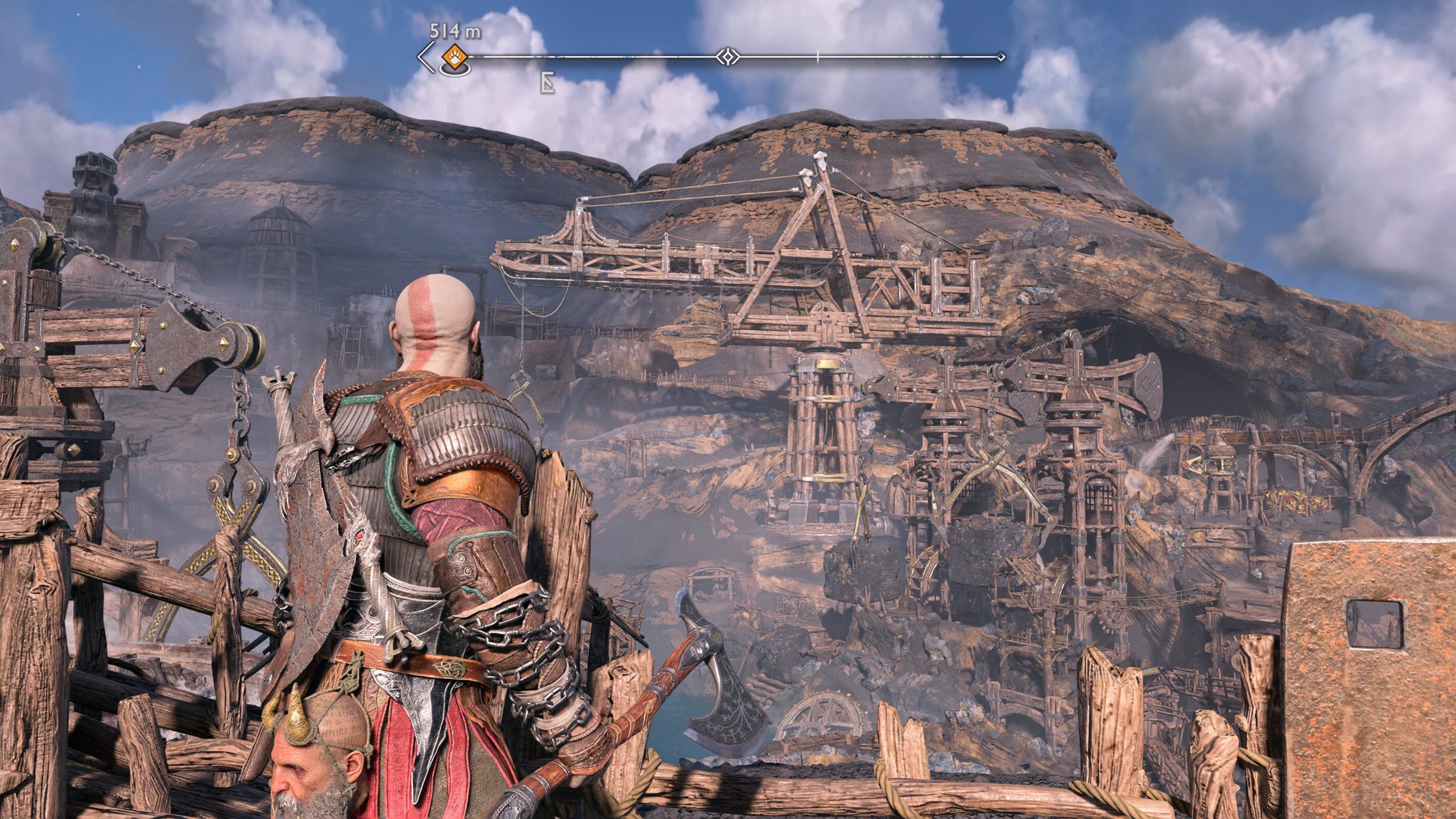
Combat is as fast and enjoyable as in the first game, but manages to up the ante and tighten things at the same time. Particle effects on the PS5 mean that your companion’s abilities and many of the magical abilities use whizzy, sparkly, powdery plumes of effects, and make fighting a treat for the eyes and well as a challenge.
You partner up with almost everybody at some point, for some reason or another, and I found fighting with different companions keeps things interesting. Though often chapter-related or specific to a realm, you can fight with Sindri and Brok and use their different bomb types, or Angboda and her colourful plumes of paint, as well as others I won’t name who break shields with their sigil arrows or plenty of other things besides. Atreus has the best setup in my opinion and offers the most damage-dealing backup of them all, but maybe that’s to be expected. It’s rare that you feel let down by a companion and it’s often a route to a new way of looking at combat scenarios.
Everything you’d expect is back this time around. Kratos can melee and throw his axe, go into his patented rage mode, command companions to attack etc. In the first game, the Leviathan Axe was new and interesting – in Ragnarök, Kratos breaks out the original Blades of Chaos, his signature chained daggers, with their own move sets, that many will recognise from much earlier God of War games. In addition, there is a third weapon in Ragnarök that I won’t spoil, but again this changes up combat even further later in the game.
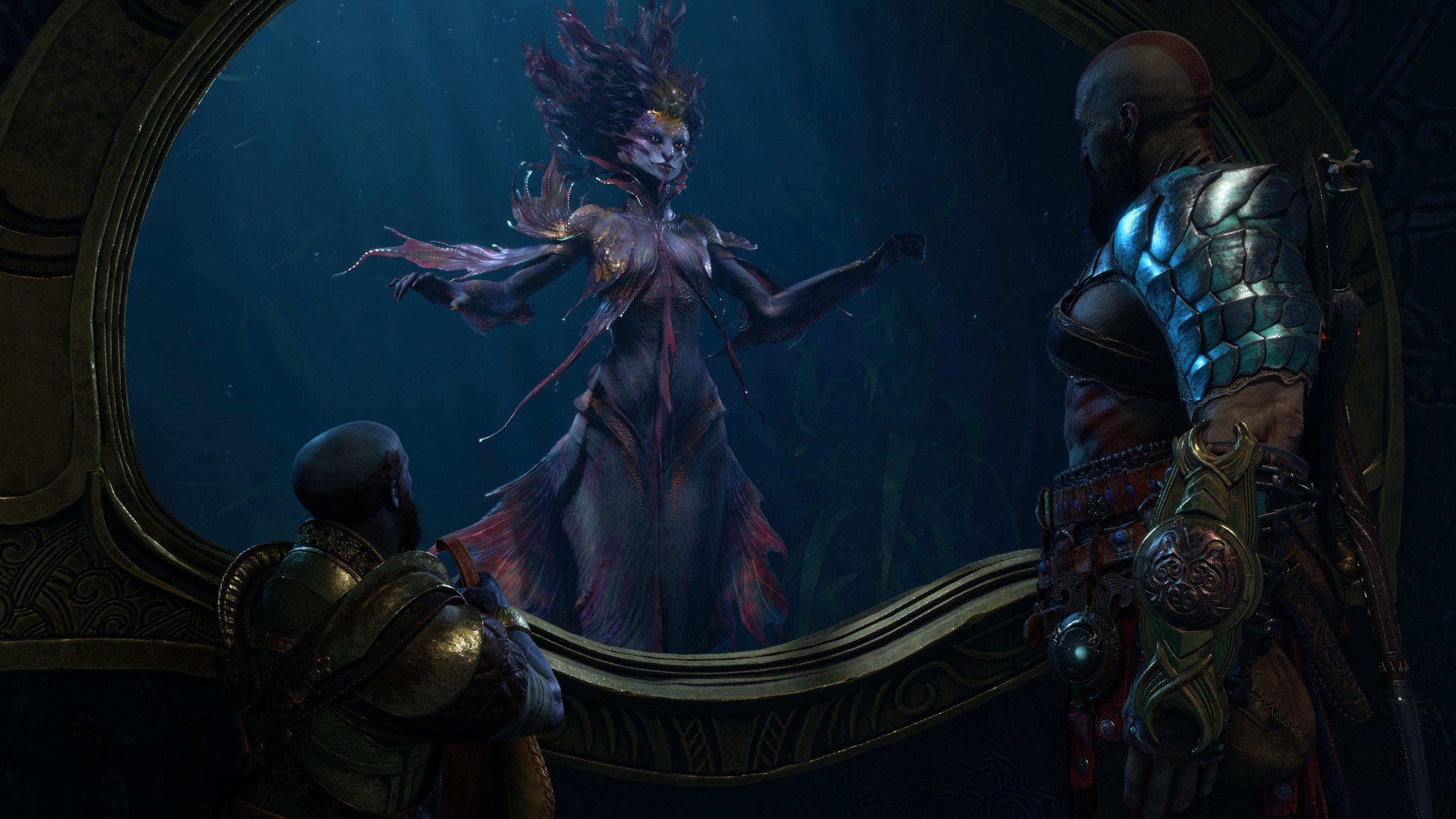
Ragnarök is a challenging hack-and-slash adventure. No one will walk it and even on the easiest difficulties like Give Me Story, fights demand you use the array of moves available to your advantage. You will not prevail with button-bashing alone. On Balanced difficulty, which is what I played on, bosses gave me some trouble and the optional fights really should be left to the end of the game. Playing mostly the story without spending the extra time to gain experience, weapons, upgrades and more, often meant I was underpowered and had to fight even harder.
From a technical standpoint, Kratos and his world have never looked better. I never noticed a single glitch or framerate drop even when dealing with hordes of enemies and with particles whizzing everywhere. The game is a showcase for the PS5 and would top out a lot of brand-new high-end PC hardware if and when it comes to PCs. I wouldn’t describe Ragnarök’s look as hyper-realistic for example, like say A Plague Tale: Requiem recently – instead it’s a fantasy and things have a slightly chunky, exaggerated feel to them. It’s hard to say things look real when there are glowing purple skylines and such, but there is just no way anyone will be disappointed with the incredible graphics on show. It’s on par with the best-looking video games available this generation.
Ragnarök has a few nice pieces of music, especially the few that nod a little to John Williams and Star Wars. I enjoyed it when I was meant to, and often found it faded away and surged exactly when it should, to be both unobtrusive and impressive at once. The voice cast should be commended – everyone involved in the motion capture, voices, acting, every performance is believable, nuanced, funny, heartfelt – you name it. Kratos’ voice carries a huge weight when so often all he says is *grunt, when he speaks there’s gravitas. Odin is also a standout performance, from that guy you remember from The West Wing, but you’ve forgotten his name.
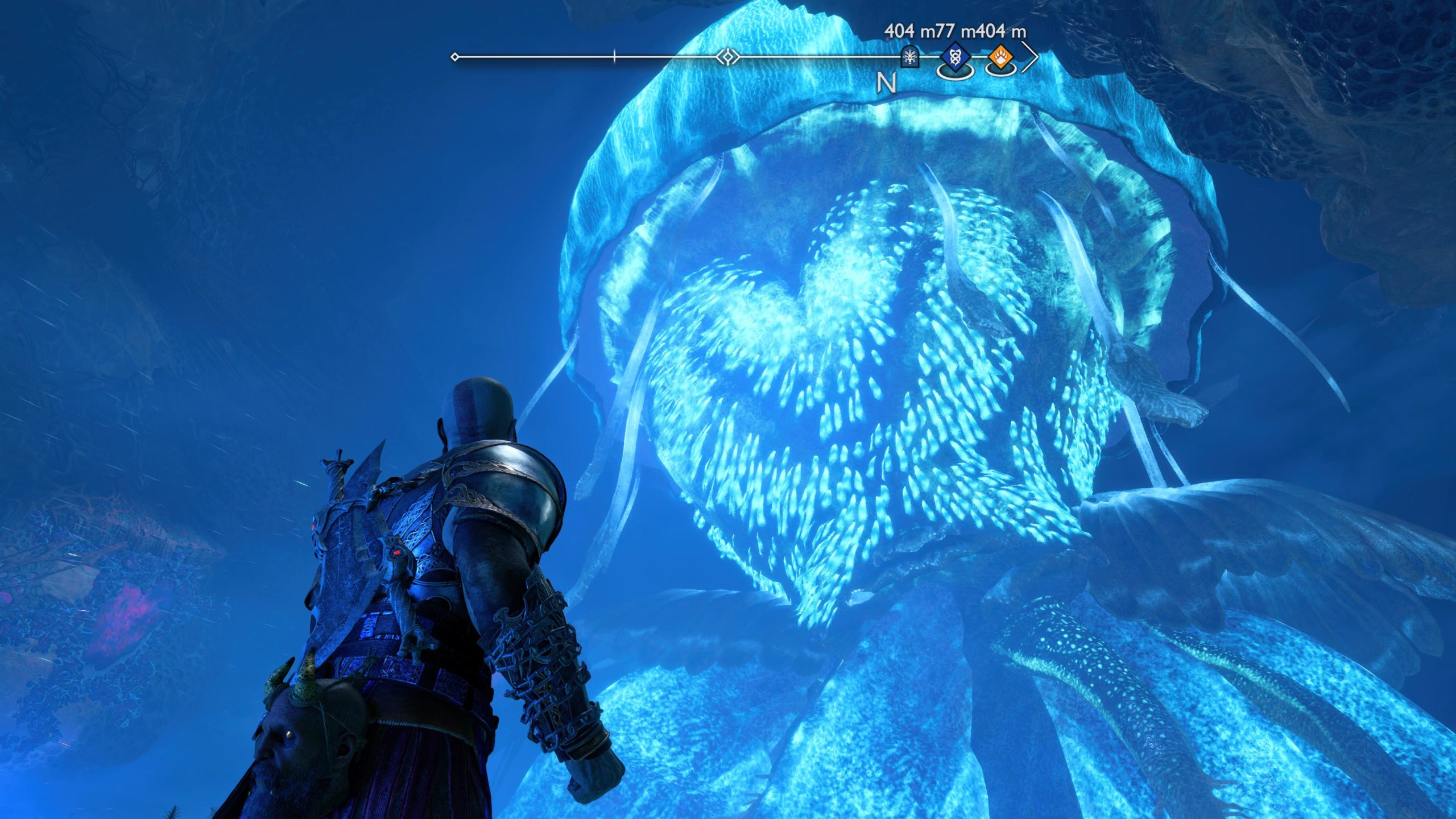
A beautifully designed and undeniably epic adventure, God Of War Ragnarök does so much right, most players will barely notice a few missteps such as the messy narrative in the opening chapters or its over-reliance on quite basic gameplay loops. However, these issues pale into insignificance when held against the dozens of things it does do with assured confidence and skill. It’s a graphical masterpiece, a narrative epic of incredible scale and size. It is a new standard for dialogue, videogame acting and voicework, and design and invention.
It’s a Game of the Year contender, among the two or three other games from this year I would also put forward. It should be at the absolute top of your to-play pile. It manages to maintain awe and spectacle throughout a long campaign, and provides fantastic challenging combat and ingenious puzzling throughout that time.
We grew to love Kratos’ son Atreus in the first game. It’s hard enough bringing up a son when they have normal real-world problems. What do you even do when it’s possible they are destined to sit alongside your enemies? What do you do when they are destined to bring about the end of the world? It’s these age old and frankly commonplace questions that Ragnarök wants to explore.
I felt more than a bit attached to Atreus when I played through GOW all those years ago. I now have a son of my own, and the dynamic between them, the fatherly pain you feel as you travel on this adventure, it’s physical sometimes when you’re a father yourself.
It’s a wonderful catharsis to watch Kratos evolve, to watch the two of them become a father and son in more than just name, and in Ragnarök it’s incredible to watch that relationship be tested, driven to breaking point. I couldn’t help but be invested, I couldn’t help but place my own son in Atreus’ shoes and ask myself what I would do in Kratos’. How far would I go to protect him? It’s good that we have video games to really work these things out.
An incredible adventure from beginning to end, God of War Ragnarök is epic in scale and nuanced in character. Its combat and gameplay haven’t changed much but why fix almost peerless systems? Ragnarök is an absolute must-play on the PS5 and a worthy contender for Game of the Year.

God Of War Ragnarök is out now on PlayStation 4 and PlayStation 5 (review platform).
Developer: Santa Monica Studio
Publisher: Sony Interactive Entertainment
Disclaimer: In order to complete this review, we were provided with a promotional code from the publisher. For our full review policy, please go here.
If you enjoyed this article or any more of our content, please consider our Patreon.
Make sure to follow Finger Guns on our social channels. Twitter, Facebook, Twitch, Spotify or Apple Podcasts – to keep up to date on our news, reviews and features
